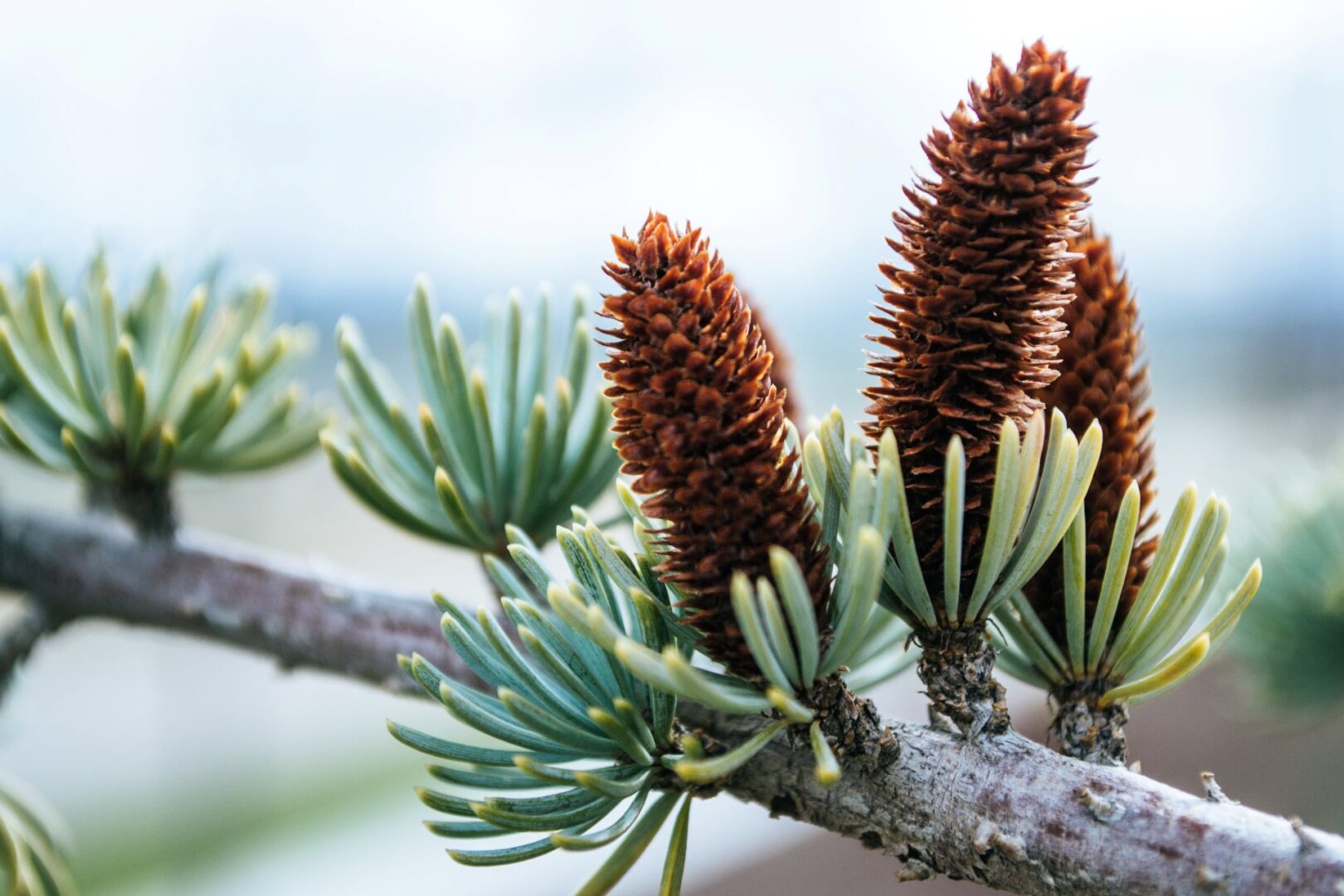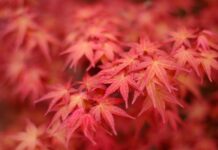Pinecones are an indispensable part of coniferous trees; we find them in the wild and are surprised if they are born in gardens. As children, we collected them while wandering through the forest or park; now, we use them to make ornaments and decorations. Pinecones can have different forms, sizes, shapes, or even colors, and they are unique.
We notice coniferous branches covered with cones a little more during the winter, but we can also find them at other times of the year. Treetops decorated with cones will catch our attention, especially in alpine nature, but also in old parks or gardens. In general, the older the conifer, the richer the cones. However, not every species can boast an abundant yearly supply of attractive cones of gigantic size or striking color. We usually must wait several years for the first cones in the garden after planting a coniferous tree. However, it is often worth it; patient waiting is richly rewarded. However, the first pinecones do not always appear for many years. There is an exception.
A Variety of Cones
The commonly grown Korean fir (Abies Koreana) is known for producing cones at an early age. Another good news is that you don’t need to look up to find them. Just look directly; you will find them concentrated at the level of your gaze. In addition, this type of fir has several very nice cultivars, although not all of them boast nice cones. The Korean fir is a slower-growing and elegant-looking conifer that only takes a little space and is, therefore, also suitable for smaller gardens. The cones are cylindrical, and, interestingly, they tend to be richly colored – steel blue to gray. A rich harvest, in this case, is conditioned by the correct location of the tree. It appreciates the sheltered habitat in the shade and relieves it with relatively wetter soil. It is a representative and valuable conifer that attracts as a solitaire in a maintained grassy area, in a larger front garden or in a wider flower bed in the yard.
The Largest and Smallest
From a botanical point of view, cones are actually the fruits of conifers and consist of arranged woody scales with a seed base. They are born from female flowers after pollination with pollen grains from inconspicuous male cones (they fall off after flowering). Female flowers change very quickly after pollination, gradually increasing in volume and gradually changing from green to brown. Inside, they hide seeds, which are a sought-after delicacy of many animals, such as squirrels and various rodents. Each conifer boasts a different form of cone. They can be either smaller (cypresses, thujas, sequoia, yew tree), wider (stone pine), longer (coniferous pine, spruce), or more massive (black pine), spherical (cedar, cypress), cylindrical (fir), or unconventionally structured (Douglas fir). Particularly tempting are cones of larger sizes. For example, the Jeffrey pine (Pinus jeffreyi) stands out. Still, the most enormous cones in the world ripen on the Coulter pine (Pinus coulteri). They are often up to 30 cm long and weigh 1.5 kg. You can find this conifer growing in the Mlyňany Arboretum.
Even such an unpretentious natural decoration can make gloomy winter days more pleasant.
Fascinating Colors
Even the coloring of ripening cones is different. There are greenish-brownish shades (Douglas fir), brown-purple, bluish (Korean firs), grayish or even reddish or red purple (fir, larch, “Acrocona” spruce, etc.). More striking colors are typical for very young cones. The most beautifully colored are cones of Korean fir, Spanish fir (Abies pinsapo), cedar, and some pine or spruce. Since most young cones are green, they often merge with needles, but this often changes quickly. Berry cones, such as juniper (Juniperus commnunis), are also decorative. Although they are rare in Central Europe, Araucaria araucana cones bring an exotic touch to the exterior. However, some conifers do not form cones at all. These are, for example, miniature species and cultivars of conifers.
Cone Abundance
The correct location of the coniferous tree in the garden also conditions a richer cone supply. In less convenient places, there are few or almost no cones. Not only the light characteristics of the place but also the quality of the soil contribute to the harvest. Cones appear in most conifers at least 20 years after planting (only Korean fir trees have them earlier). They are formed either annually or once every 2-4 years. It is interesting that in some species, at the time of their botanical maturity, cones disintegrate directly on trees (cedars, fir), while others fall from trees intact. They reach the soil surface, where they fester (pine, spruce) or become animal food. Cones of European larch tend to fall to the soil’s surface along with the branch where they ripen. Most of the cones on the branches are distributed individually (pine trees) and further apart, but sometimes they are concentrated in smaller clusters (European larch), which looks fabulous. Conifers, which are spotted with several small cones (fir), also look attractive. And if you focus on these unique creations of nature even more, you will find that some cones stick out, others hang (spruces, Douglas firs), or grow erected (firs, cedars) or look like dancing mini objects (Douglas firs).
 Pinecone is far from any natural food; it can also surprise. Especially for children, it is eye-catching to watch a breathtaking natural barometer – the closing and opening of cone scales. When it rains, they close and remain so in wet conditions or open completely on drier and sunnier days. As the cone dries, its outer parts lose water faster than the inner ones, and there is a gradual opening. This process is accompanied by a characteristic cracking, which happens if you bring a wet cone outside to an overheated apartment.
Pinecone is far from any natural food; it can also surprise. Especially for children, it is eye-catching to watch a breathtaking natural barometer – the closing and opening of cone scales. When it rains, they close and remain so in wet conditions or open completely on drier and sunnier days. As the cone dries, its outer parts lose water faster than the inner ones, and there is a gradual opening. This process is accompanied by a characteristic cracking, which happens if you bring a wet cone outside to an overheated apartment.
In the Garden or at Home
Cones, especially the larger and more colorful ones, give an unmistakable look to adult conifers and make the garden more attractive. However, conifers, which decorate nice cones, should be given as much visible and as representative a place as possible in the garden. Some types of cones can also be used in the garden, for example, as natural mulching material for flower beds in more representative places, or they can also be used to cover the soil in pots. You can also use this natural product to make stylish autumn or winter decorations, charming wreaths or Christmas candleholders. However, sometimes it is enough to collect various types of cones and place them in wicker or wire baskets at the entrance door. Even such an unpretentious natural decoration can make gloomy winter days more pleasant.
Text: Daniel Košťál, photo: Daniel Košťál, pexels

















